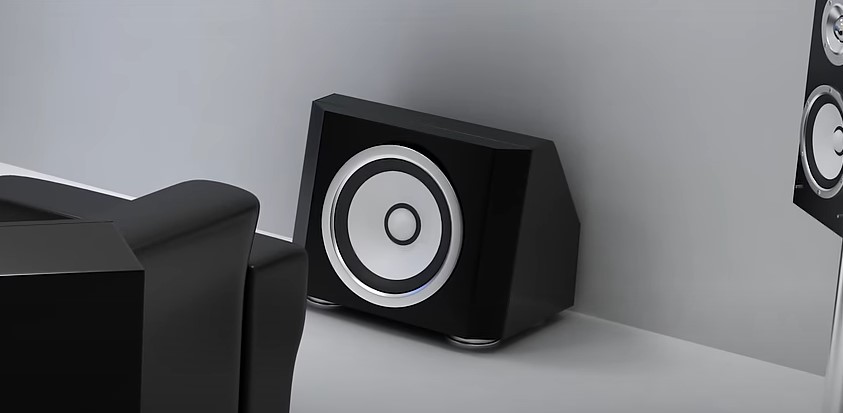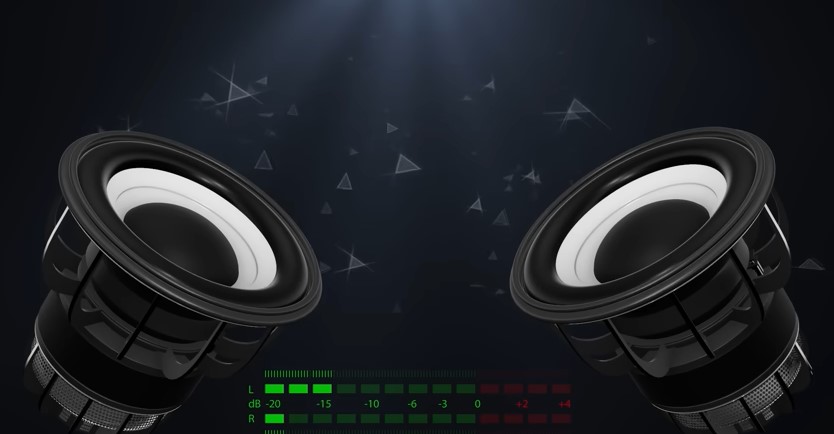How to connect a subwoofer to an old amplifier? The answer is, use a Y-adapter with speaker wire. Ensure both devices are off before connecting.
Connecting a subwoofer to an old amplifier can enhance your audio experience by adding deep bass frequencies to your sound system. By following a few simple steps and using the correct adapter, you can easily integrate a subwoofer into your existing setup.
This guide will walk you through the process of connecting your subwoofer to an old amplifier, allowing you to enjoy rich, powerful sound without the need for a complex or expensive upgrade. Whether you’re a music enthusiast or a home theater buff, adding a subwoofer to your old amplifier can take your audio setup to the next level.
Determining Compatibility
When connecting a subwoofer to an old amplifier, determining compatibility is crucial to ensure optimal sound performance. Before making any connections, it’s essential to check the specifications of the amplifier and find a suitable subwoofer that aligns with its capabilities. Let’s delve into the process of determining compatibility to achieve the best audio experience.
Checking The Amplifier’s Specifications
Before proceeding with connecting a subwoofer to an older amplifier, it’s essential to review the amplifier’s specifications. Look for the following key details:
- Power output: Ensure that the amplifier can deliver enough power to drive the subwoofer without overloading or damaging the equipment.
- Frequency response: Check the frequency range of the amplifier to ensure it can handle the low frequencies produced by the subwoofer.
- Impedance: Verify the impedance rating of the amplifier to ensure it matches the recommended impedance for the subwoofer.
Finding The Appropriate Subwoofer

Once you’ve assessed the amplifier’s specifications, it’s time to find a subwoofer that complements the capabilities of the old amplifier. Consider the following factors:
- Power handling: Choose a subwoofer that can handle the power output of the amplifier without distortion or damage.
- Compatible impedance: Ensure that the subwoofer’s impedance rating matches the amplifier’s specifications to prevent impedance mismatch issues.
- Frequency range: Select a subwoofer with a frequency response that aligns with the amplifier’s capabilities to achieve a balanced and cohesive sound output.
Connecting The Subwoofer
A crucial aspect of setting up a subwoofer with an old amplifier is ensuring that the connection is undertaken properly. This involves locating the appropriate ports, identifying the input and output connections, using the right cables, and securing the connections.
Locating The Appropriate Ports
Before connecting the subwoofer, identify the appropriate ports on your old amplifier that are designated for subwoofer usage.
Identifying The Input and Output Connections
Once you have located the ports, ensure you identify the input and output connections for the subwoofer. This will help in determining the correct way to establish the connections.
Using Speaker Wire or Rca Cables
Depending on the type of connections available on both the subwoofer and the amplifier, you may use speaker wire or RCA cables to establish the connection between the two devices.
Securing The Connections
After making the necessary connections, it is essential to ensure they are secure. This will help in maintaining a stable and uninterrupted signal flow between the subwoofer and the old amplifier.
Adjusting The Settings
Learn how to connect a subwoofer to an old amplifier by adjusting the settings for optimal sound quality. Upgrade your audio system without the need for a new amplifier.
Accessing The Amplifier’s Settings
Before adjusting any settings, locate the control panel or knobs on your old amplifier.
Setting The Crossover Frequency
Adjust the crossover frequency on the amplifier to blend the subwoofer’s low-frequency sounds seamlessly with the main speakers.
Adjusting The Phase and Volume
Ensure the phase and volume of the subwoofer are in sync with the amplifier for optimal sound quality.
Powering On the System
To power on the system and connect a subwoofer to an old amplifier, first locate the audio input connections on both devices. Use RCA cables to establish the connection, ensuring a stable and secure fit. Adjust the subwoofer settings to integrate seamlessly with your existing audio setup.
Turning On the Amplifier
To start enjoying the powerful bass of your subwoofer, you need to turn on the amplifier. Simply locate the power switch on your amplifier and flip it to the “On” position. Now, you’re ready to bring your sound system to life!
Activating The Subwoofer
Once the amplifier is powered on, it’s time to activate your subwoofer. This step ensures that your subwoofer works seamlessly with your old amplifier to produce the deep, rich bass you desire. Here’s how you can do it:
- Locate the dedicated subwoofer output on your amplifier.
- Take one end of an RCA cable, plug it into the subwoofer pre-out jack on your amplifier, and then connect the other end to the input jack on your subwoofer.
- Check if your amplifier has a setting to enable the subwoofer output. If it does, make sure to turn this setting on. Refer to the amplifier’s user manual for specific instructions.
- Set the crossover frequency on the subwoofer. This determines the frequency at which the subwoofer takes over the bass from the other speakers. Adjust it according to your preference, keeping in mind that lower frequencies create more rumble, while higher frequencies provide more musical accuracy.
With the subwoofer activated and properly adjusted, you’re ready to experience the enhanced bass response that will take your audio system to the next level. Whether you’re watching movies, listening to music, or gaming, the deep thumps and rumbles from the subwoofer will add a whole new dimension to your sound.
Testing The Connection
When connecting a subwoofer to an old amplifier, it is crucial to test the connection properly to ensure everything is working as it should. Follow these steps to test the connection and ensure your subwoofer is set up correctly.
Playing A Test Tone
Begin by playing a test tone through your amplifier. This will help you determine if the subwoofer is receiving and playing the audio signal. Use a recording of a low-frequency test tone, typically around 50Hz, to check the subwoofer’s response specifically to low frequencies.
Checking The Subwoofer’s Output
Next, check the subwoofer’s output to ensure that it is producing sound. Listen for a distinct and clear bass sound coming from the subwoofer. If the subwoofer is not producing sound, recheck the connections and make sure everything is properly plugged in and configured.
Troubleshooting
Ensuring Proper Power Supply
Check if the amplifier and subwoofer are receiving adequate power to function properly.
Verifying Correct Wiring
Ensure that all the wires are connected securely and accurately from the amplifier to the subwoofer.
Addressing Audio Distortion
If you experience distorted sound, adjust the volume levels and check the input/output connections.
Safety Considerations
Before connecting a subwoofer to an old amplifier, it’s essential to consider safety factors to ensure smooth and safe operation of the equipment. This includes avoiding electrical hazards and ensuring proper ventilation.
Avoiding Electrical Hazards
- Unplug the amplifier from the power source before connecting the subwoofer to avoid the risk of electrical shock.
- Ensure that all wiring and connections are secure and insulated to prevent short circuits or electrical fires.
- Use a dedicated circuit breaker to prevent overloading the amplifier and causing damage to the subwoofer or other components.
Ensuring Proper Ventilation
- Place the amplifier and subwoofer in a well-ventilated area to prevent overheating, which can lead to equipment failure or even fire hazards.
- Allow sufficient space around the amplifier and subwoofer for air circulation to dissipate excess heat generated during operation.
- Regularly clean the amplifier and subwoofer vents and fans to prevent dust buildup, which can impede proper airflow and cooling.
FAQ
Can I Connect Subwoofer to Normal Amplifier?
Yes, you can connect a subwoofer to a normal amplifier using the speaker-level inputs or a line output converter.
How Do I Connect My Subwoofer to My Old Receiver?
To connect your subwoofer to your old receiver, use a subwoofer cable to connect the subwoofer’s line input to the receiver’s subwoofer output. Adjust the crossover settings on your receiver to match the capabilities of your subwoofer. Ensure that both the subwoofer and receiver are powered off before making any connections.
How To Connect a Subwoofer to An Amplifier with No Sub Output?
To connect a subwoofer to an amplifier without a sub output, use a speaker-level input on the subwoofer. Connect the speaker wires from the amplifier’s output to the speaker-level input on the subwoofer to enjoy enhanced bass response.
How Do You Connect a Passive Subwoofer to An Old Amp?
To connect a passive subwoofer to an old amp, follow these steps: 1. Locate the speaker outputs on your amp. 2. Connect the speaker wire from the subwoofer to the amp’s speaker outputs. 3. Ensure positive (+) and negative (-) terminals match. 4. Adjust the subwoofer’s settings and enjoy enhanced bass.
How Do I Connect a Subwoofer to An Old Amplifier?
To connect a subwoofer to an old amplifier, you’ll need a subwoofer cable and follow a few simple steps.
Can I Connect a Powered Subwoofer to An Old Amplifier?
Yes, you can connect a powered subwoofer to an old amplifier by using a line level converter or a speaker-level to line-level adapter.
Final Thought
Incorporating a subwoofer with an old amplifier can enhance your audio experience significantly. By following the simple steps outlined in this guide, you can effectively connect the two devices without any issues. Enjoy richer, more immersive sound by bridging the gap between your old amplifier and subwoofer.






